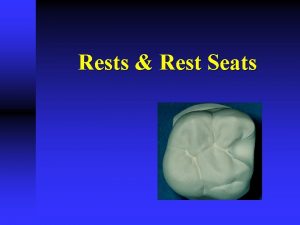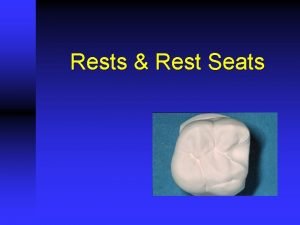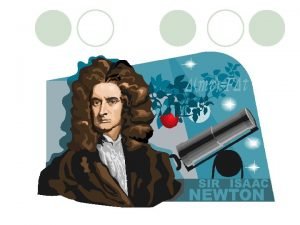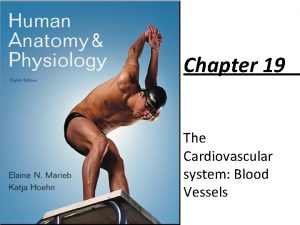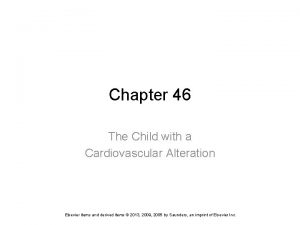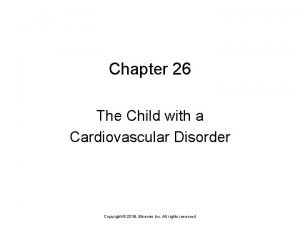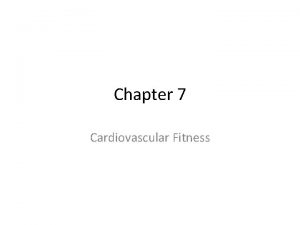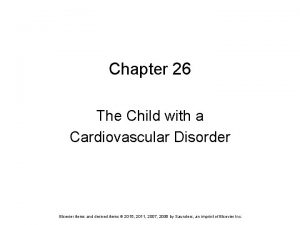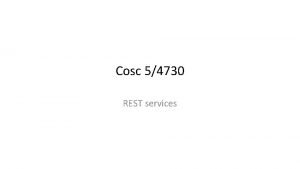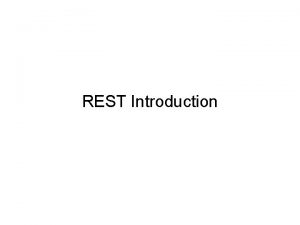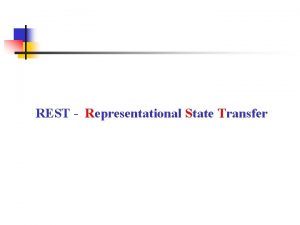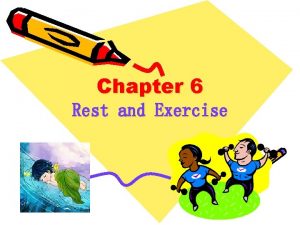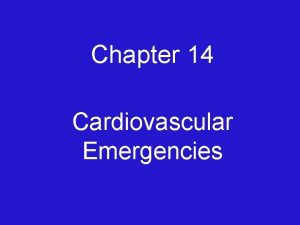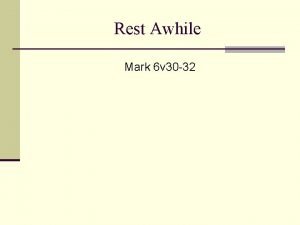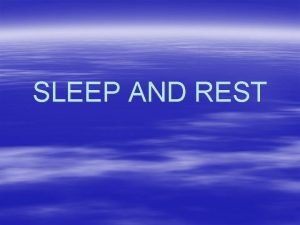Cardiovascular System Chapter 13 Cardiovascular System At rest




























- Slides: 28

Cardiovascular System Chapter 13

Cardiovascular System • At rest, the heart pumps about 7, 000 liters of blood through the body each day (contracting about 2. 5 million times in the average lifetime) – 1850 gallons = 925 gallons of milk • 3 parts: – Heart – Blood vessels – Blood – 2 closed pathways: • Pulmonary circuit: sends oxygen-poor blood to the lungs to pick up oxygen and unload carbon dioxide • Systemic circuit: sends oxygen-rich blood to all body cells and removes waste

Structure of the Heart • Average adult heart— 14 cm long and 9 cm wide • Bordered by the lungs, lies anterior to the vertebral column and posterior to the sternum • Pericardium: membranous sac that encloses the heart – Innermost layer called the visceral pericardium (covers the heart) – Middle layer called the parietal pericardium – Between the two is called the pericardial cavity (contains fluid that reduces friction between the membrane and the heart)

Pericardium

Wall of the Heart • 3 distinct layers: – Epicardium (visceral pericardium) —reduces friction between the pericardium and the heart – Myocardium—consists of muscle tissue that pumps blood out of the heart chamber – Endocardium—contains elastic fibers, blood vessels and specialized muscle fibers

Heart Chambers • Internally, the heart is divided into four chambers: – Two upper atria (plural for atrium) – Two lower ventricles – Solid, wall-like septum separates the left side of the heart and the right side of the heart • Blood from one side of the heart never mixes with blood from the other side • Atrioventricular valve (AV valve) on the right and left of the heart ensure one-way blood flow between the atrium and ventricle on each side

Heart Valves • Vena cavas (superior and inferior) bring deoxygenated blood to the right atrium • Tricuspid valve lies between the right atrium and right ventricle • Pulmonary valve lies between the right ventricle and pulmonary trunk • Pulmonary trunk receives blood from the right ventricle, separates into pulmonary arteries that lead to the lungs

Heart valves • Pulmonary veins deliver blood to the left atrium from the lungs (2 from the right and 2 from the left) • Mitral valve lies between the left atrium and left ventricle (also called the bicuspid valve) • Aortic valve lies between the left ventricle and the aorta • Aorta large artery that receives blood from the left ventricle



Heart Actions • Functions in a coordinated fashion – While the atria contract, the ventricles relax – While the ventricles contract, the atria relax – Both atria and ventricles relax for a brief time • This series of events constitutes a complete heartbeat, or cardiac cycle

Heart Actions • Pressure changes in the heart chambers open and close the valves • Pressure within the heart fluxuates depending on which valves should be open for blood flow

Heart Sounds • The sound of a heart beat are due to vibrations in the heart tissues when the valves close • First part—when ventricles contract & AV valves close • Second part—when ventricles relax & pulmonary and aortic valves close

Electrocardiogram • An electrocardiogram (ECG/EKG) is a recording of the electrical changes in the myocardium (muscle layer of the wall of the heart) • The pattern is generated as action potentials stimulate cardiac muscle cells to contract

EKG

Heart Rates • Tachycardia is an abnormally fast heartbeat (more than 100 beats per minute) • Bradycardia is a slow heart rate (less than 60 per minute); may occur during sleep • Body temperature, certain drugs, heart disease can all affect heart rate

Blood Vessels • Closed circuit of tubes that carries blood from the heart to the body cells and back • Vessels include: – Arteries—strong, elastic vessels adapted for transporting blood away from the heart under relatively high pressure

Blood Vessels • Vessels include: – Arterioles—small branch of an artery that communicates with a capillary network – Capillaries—smallest blood vessels that connect to arterioles and allow for exchange of nutrients and waste

Blood Vessels • Vessels include: – Venules—vessel that transports blood from capillaries to veins – Veins—transport blood back to the atria and follow pathways that roughly parallel those of arteries

Blood Pressure • Force blood exerts against the inner walls of the blood vessels • Commonly refers to the pressure in arteries supplied by branches of the aorta

Arterial Blood Pressure • Rises and falls in a pattern corresponding to the phases of the cardiac cycle – Contraction of the ventricles squeezes blood out and into the pulmonary trunk and aorta which increases the pressure in these arteries • Maximum pressure during ventricular contraction is called the systolic pressure

Arterial Blood Pressure • When the ventricles relax: – Arterial pressure drops – Lowest pressure that remains in the arteries before the next ventricular contraction is called diastolic pressure

Pulse • The surge of blood entering the arteries during ventricular contraction expands the arterial walls • Pressure begins to drop almost immediately as contraction ends, and the arterial walls recoil • The alternating expanding and recoiling of arteries can be felt as a pulse

Factors the Influence Blood Pressure • Cardiac Output – The volume of blood pushed out from the ventricle per minute – If volume or heart rate increases, cardiac output increases = blood pressure increases

Factors the Influence Blood Pressure • Blood Volume – The sum of the formed elements and plasma in the vascular system – Blood pressure is directly proportional to blood volume in the system

Factors the Influence Blood Pressure • Peripheral Resistance – Force of friction between blood and the walls of the blood vessels – Blood pressure must overcome peripheral resistance if the blood is to continue flowing

Factors that Influence Blood Pressure • Blood Viscosity: – Difficulty with which the molecules of a fluid flow past one another – The greater the viscosity, the greater the resistance to flow

Control of Blood Pressure Blood pressure = Cardiac Output x Peripheral Resistance • Both cardiac output and peripheral resistance are controlled in part by baroreceptor reflexes • Baroreceptors are receptors that sense changes in blood pressure – If arterial pressure increases, baroreceptors send impulses to the brain to decrease heart rate
 Rest seat on canine
Rest seat on canine Rest and rest seat
Rest and rest seat Hamlet in purgatory
Hamlet in purgatory Canine rest shape
Canine rest shape Newton's second lawlaw
Newton's second lawlaw Blood vesel
Blood vesel Chapter 5 learning exercises medical terminology
Chapter 5 learning exercises medical terminology Chapter 11 the cardiovascular system figure 11-3
Chapter 11 the cardiovascular system figure 11-3 Chapter 11 the cardiovascular system figure 11-3
Chapter 11 the cardiovascular system figure 11-3 Chapter 11 the cardiovascular system
Chapter 11 the cardiovascular system Hypertensive atherosclerotic cardiovascular disease
Hypertensive atherosclerotic cardiovascular disease Chapter 8 cardiovascular system
Chapter 8 cardiovascular system Chapter 13 cardiovascular system
Chapter 13 cardiovascular system Chapter 11 the cardiovascular system figure 11-2
Chapter 11 the cardiovascular system figure 11-2 Cardiovascular system
Cardiovascular system True capillaries
True capillaries Chapter 46 the child with a cardiovascular alteration
Chapter 46 the child with a cardiovascular alteration Chapter 26 the child with a cardiovascular disorder
Chapter 26 the child with a cardiovascular disorder Wolters kluwer
Wolters kluwer Fitness chapter 7
Fitness chapter 7 Chapter 16 cardiovascular emergencies
Chapter 16 cardiovascular emergencies Chapter 26 the child with a cardiovascular disorder
Chapter 26 the child with a cardiovascular disorder What makes up the cardiovascular system
What makes up the cardiovascular system Cushing reflex
Cushing reflex Totally tubular dude
Totally tubular dude Crash course heart
Crash course heart Lesson 11 cardiovascular system
Lesson 11 cardiovascular system Circulatory system tissue
Circulatory system tissue Introduction to cardiovascular system
Introduction to cardiovascular system
